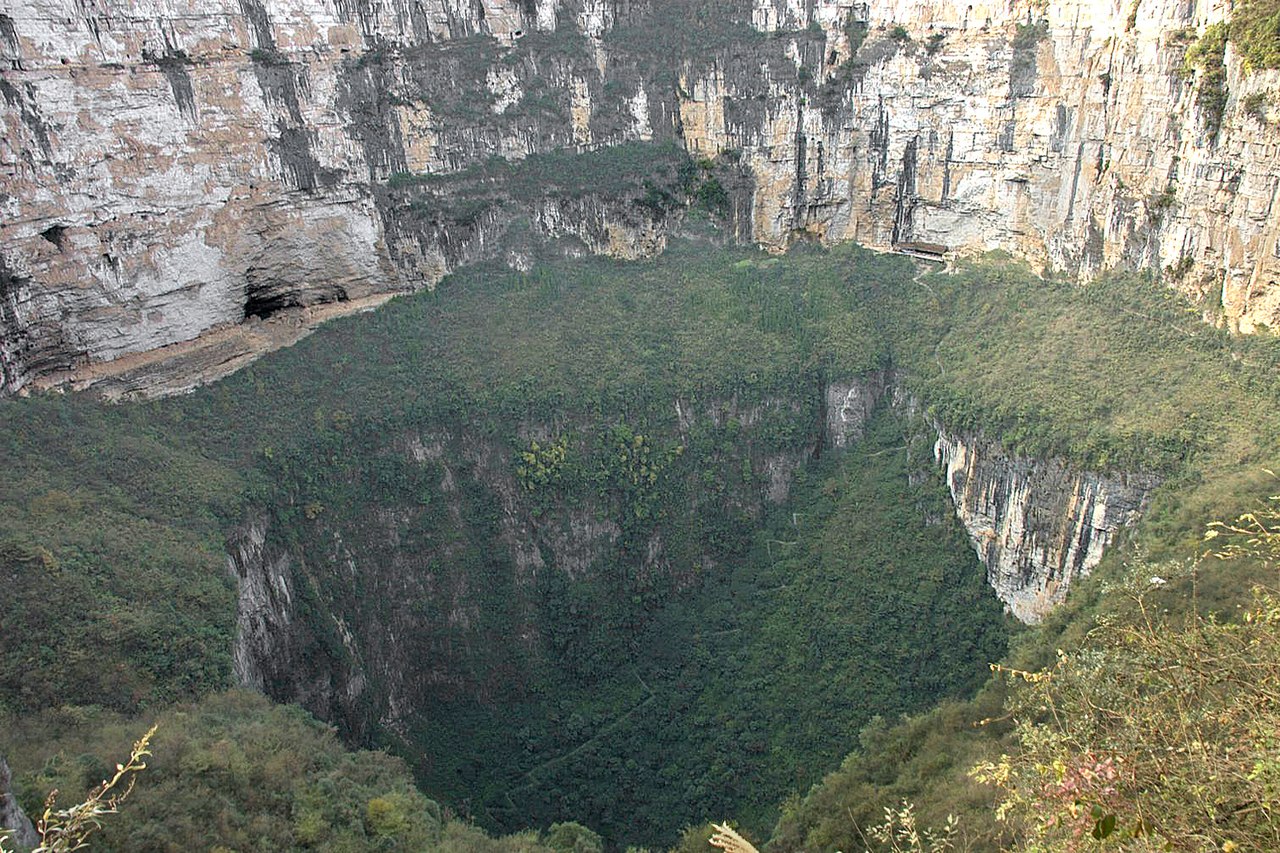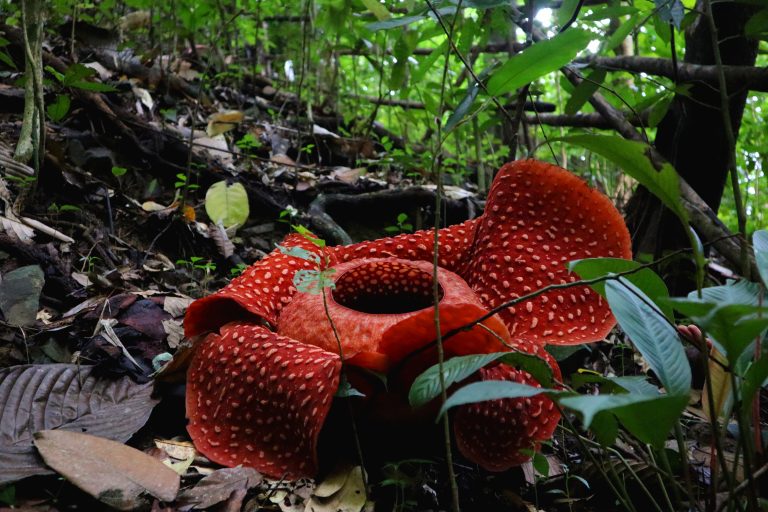Xiaozhai Tiankeng:The World’s Deepest Sinkhole
Imagine a sinkhole so deep and vast that you can skydive into it with many interesting life forms and a river inside.
Sounds like a scene out of a fantasy movie, right?
But such a place does exist, and it’s called Xiaozhai Tiankeng.
You are going to learn many interesting facts about it in this article.
Geographical and Geological Characteristics of Xiaozhai Tiankeng
Let’s start our exploitation of this enigmatic natural formation by looking at its physical attributes.
Where is it located?
This massive sinkhole is in China, in Fengjie County of the Chongqing Municipality.
Size and Depth
Xiaozhai Tiankeng is a gigantic sinkhole. It measures approximately 537 meters (1,762 feet) in diameter and between 511 and 662 meters (1,667-2,172 feet) in depth.
This makes it not only the deepest but also one of the largest sinkholes in the world.
Structure and Formation
The sinkhole has a unique double-nested structure. This structure has two distinct “bowls” or layers. Each of these layers is more than 300 meters deep.
This structure has been formed because an underground river has constantly eroded the earth and carved out the Difeng cave beneath the sinkhole over millions of years.
The river still flows through the sinkhole and has created vertical cliffs that define the pit.
Geology
Xiaozhai Tiankeng is situated in a large karst area. Karst is formed when carbonate rocks, mainly limestone and dolomite, get dissolved in water. In Xiaozhai Tiankeng’s case, it’s lower Triassic limestone.
This formation has been the result of the slow dissolution of limestone by water for approximately over 128,000 years. This slow and continuous erosion is the cause of the sinkhole’s huge size and complex structure.
The Unique Ecosystem of Xiaozhai Tiankeng
This giant sinkhole is not only awe-inspiring due to its monolithic dimensions but also the interesting flora and fauna that call it home.
Biodiversity
It hosts over 1,285 identified plant species, including rare trees like the Ginkgo biloba, commonly known as the maidenhair tree, one of the oldest living plant species on Earth.

The sinkhole has different microclimates at varying depths, with varied light penetration and high humidity. This results in a layered ecosystem with plants having adapted to survive in the various niches.
The sinkhole also provides a habitat for endangered animal species such as the clouded leopard and the Chinese giant salamander.
Water Features
There is an underground river running through the sinkhole. The river originates from the Tianjing fissure gorge and ends as a 46-meter-high waterfall at the Migong River.
There’s a seasonal waterfall that cascades down the steep walls of the pit during heavy rains, and that’s a sight to behold.
Tourism and Accessibility
So, how easy is it to visit Xiaozhai Tiankeng, and how does it do as a tourist destination?
Historical Significance
Even though local people have known about Xiaozhai Tiankeng for centuries, the outside world got to know about it only after it was discovered in 1994 by British explorers.
This discovery has opened up new opportunities for scientific research and tourism.
Modern Tourism
A zig-zag pathway with 2,800 steps descending into the sinkhole has been built. This structure has contributed significantly to the local economy by attracting domestic and international tourists.
Thanks to this stepped pathway, the Visitors can now see this breathtaking natural wonder up close.
Scientific Interest and Exploration
Now, let’s take a look at the the exploitation and research aspects of Xiaozhai Tiankeng.
Mapping and Exploration Challenges
Alluring as Xiaozhai Tiankeng is, mapping its underground river and cave system has proven to be challenging. The intense gushing of the river has made it difficult for speleologists to navigate and fully explore the sinkhole’s depths.
Theories on Formation
The experts are still debating about how Xiaozhai Tiankeng was formed.
Many believe that the gradual erosion of limestone over 128,000 years formed it, and others speculate that it could have been formed by some other geological events, such as a meteorite strike.
Conclusion
Xiaozhai Tiankeng, in China’s Chongqing Municipality, is the world’s deepest and one of the largest sinkholes, measuring 537 meters in diameter and 511-662 meters in depth.
Formed over 128,000 years through limestone erosion by an underground river, it features a unique double-nested structure.
The sinkhole hosts a diverse ecosystem with over 1,285 plant species and endangered animals like the clouded leopard and Chinese giant salamander.
An underground river and seasonal waterfalls add to its natural beauty.
Revealed to the world outside China in 1994, it has become a tourist destination and inspires scientific interest and exploration.







